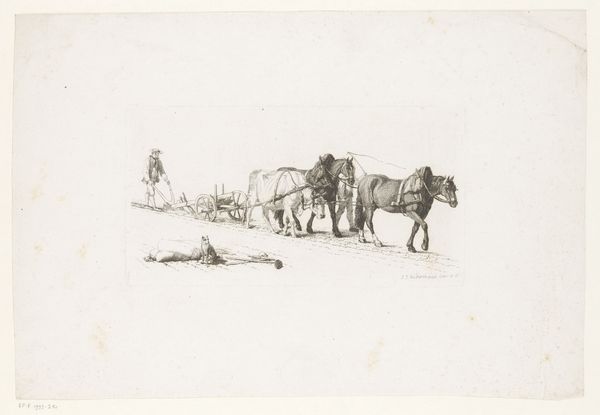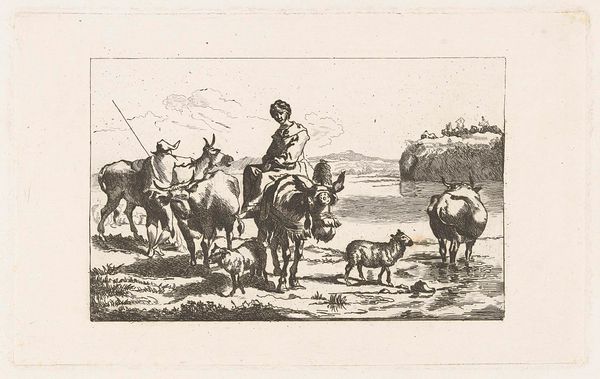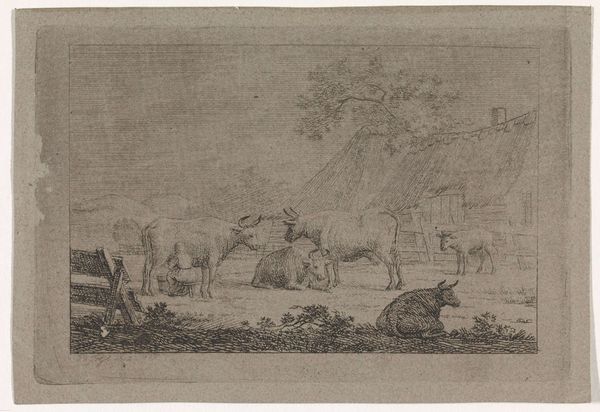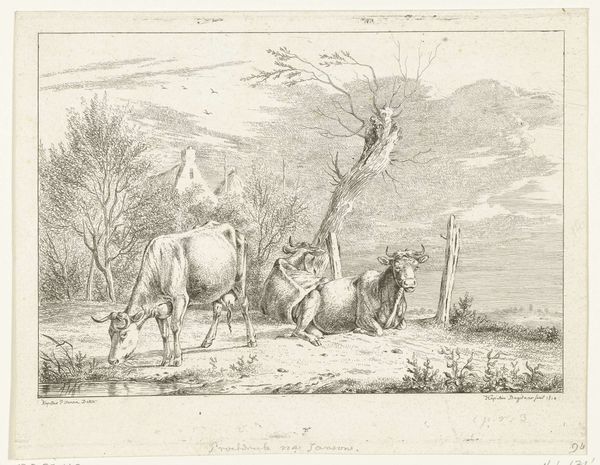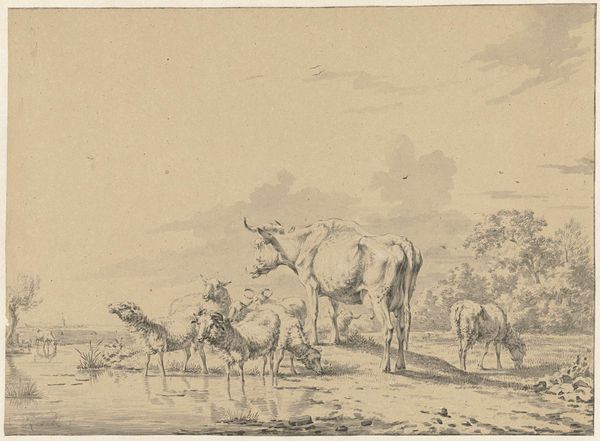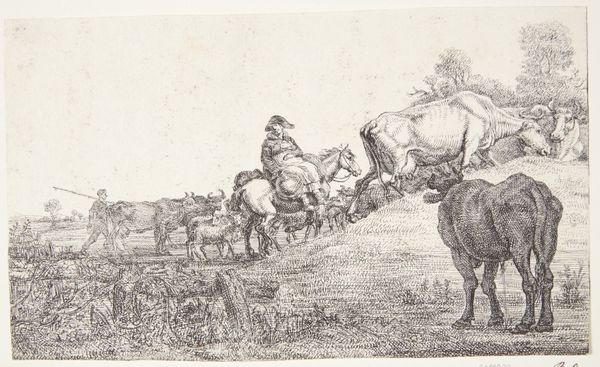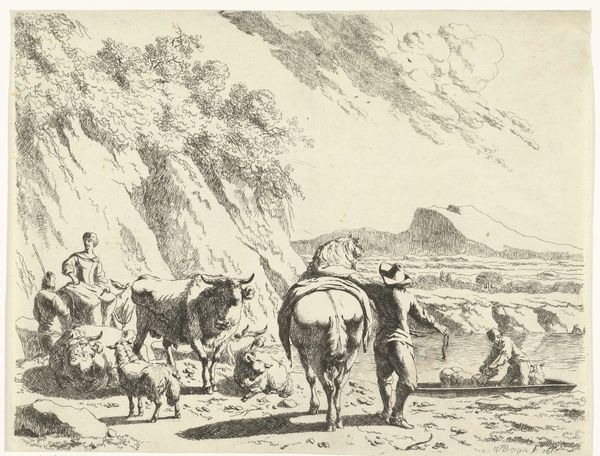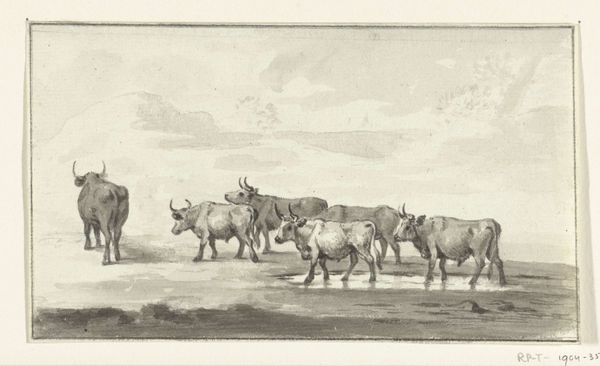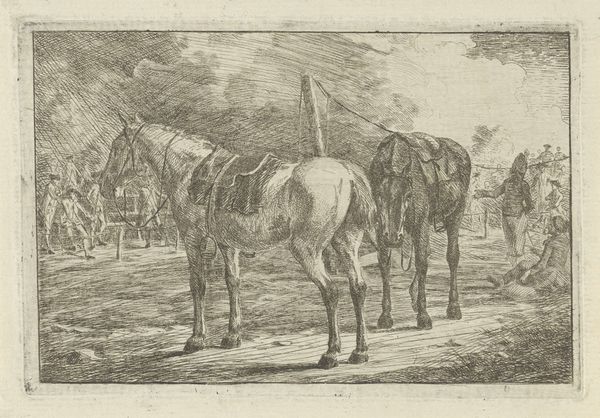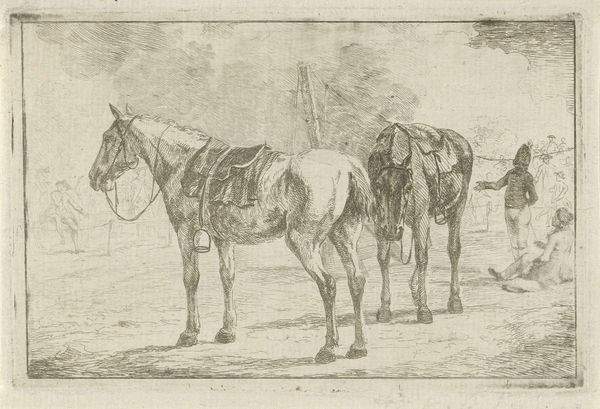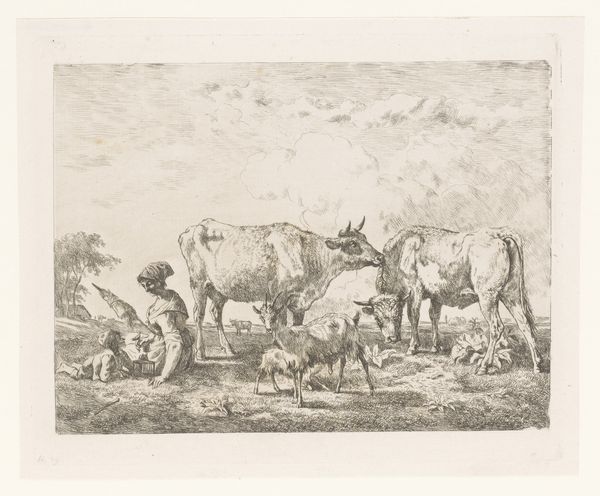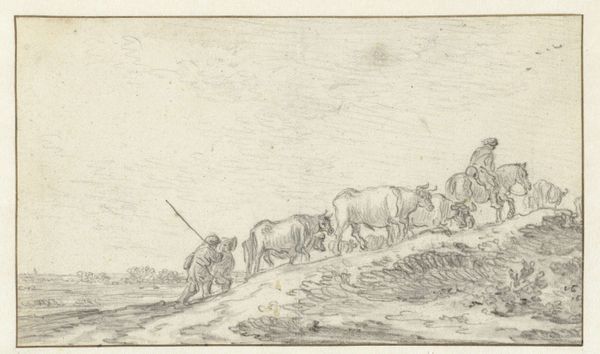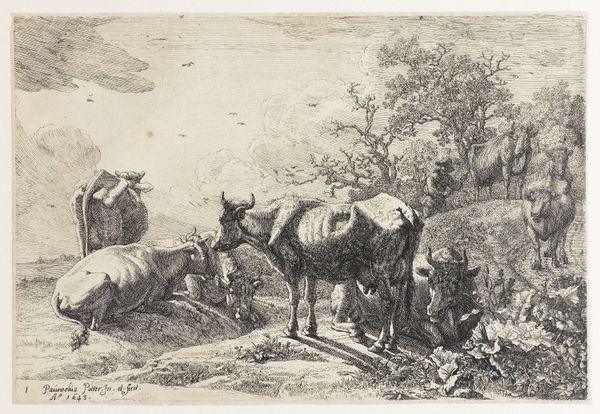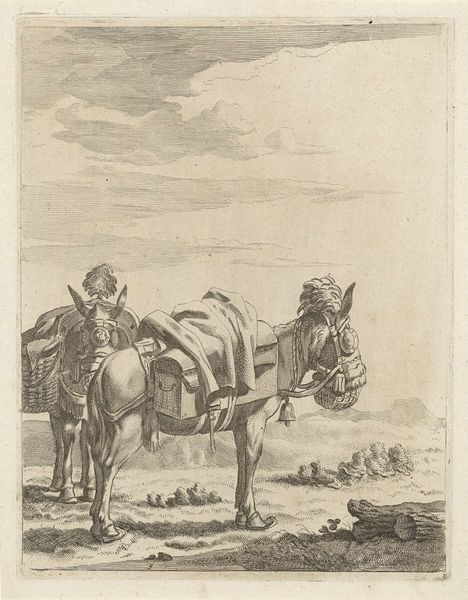
drawing, pencil
#
drawing
#
pencil sketch
#
landscape
#
figuration
#
romanticism
#
pencil
#
genre-painting
#
realism
Dimensions: height 141 mm, width 195 mm
Copyright: Rijks Museum: Open Domain
Curator: This pencil drawing, titled "Cattle Driver with a Group of Cattle," was created by Jean Bernard sometime between 1775 and 1833. It's currently housed here at the Rijksmuseum. Editor: It has such a raw, immediate feel. The textures conveyed just through pencil – the roughness of the hides, the implied vastness of the landscape – is really evocative. It is an era of romanticism, where landscapes and themes depicting the working class become common. Curator: Absolutely. Bernard captures a certain truth in the daily labor, especially significant in the Dutch landscape tradition. Think about the availability of pencils at this time and its effect on art making. Were they mass-produced, locally made, readily available, and how did they change the field compared to charcoal, which was commonly used at that point? Editor: It also forces us to consider the socio-economic backdrop. Rural life in the late 18th and early 19th centuries in the Netherlands would have been very dependent on agrarian labor and the social position of the farmer. I wonder how much that influenced the public appeal and market for these types of pastoral images, perhaps tapping into romanticized visions. Curator: It’s interesting you mention appeal. One of the main uses of landscape art depicting workers was exactly for propaganda purposes, such as in soviet realism later on. However, at the time the art world did not include them as a significant genre until romanticism took hold. Editor: Yes, exactly. And even within what might appear like simple rural scenes, we must think about how social hierarchies and economic realities might be subtly represented and perhaps reinforced through artistic choices. Were there biases reflected? For instance, who were the audiences that visited places like the Rijksmuseum at the time? And how were these working-class citizens seen? Curator: Food for thought for sure. Examining drawings like this helps us to comprehend not only how art has evolved with changing materials, but also to interrogate its cultural implications across history. Editor: It leaves me with questions about our connection to landscape.
Comments
No comments
Be the first to comment and join the conversation on the ultimate creative platform.
